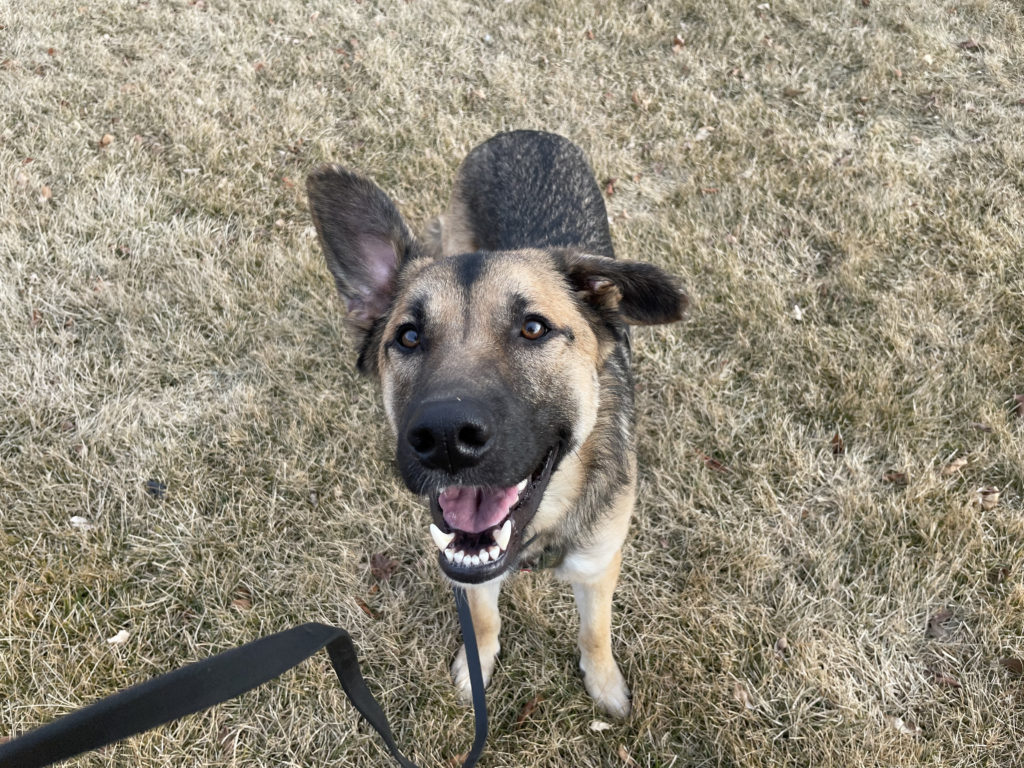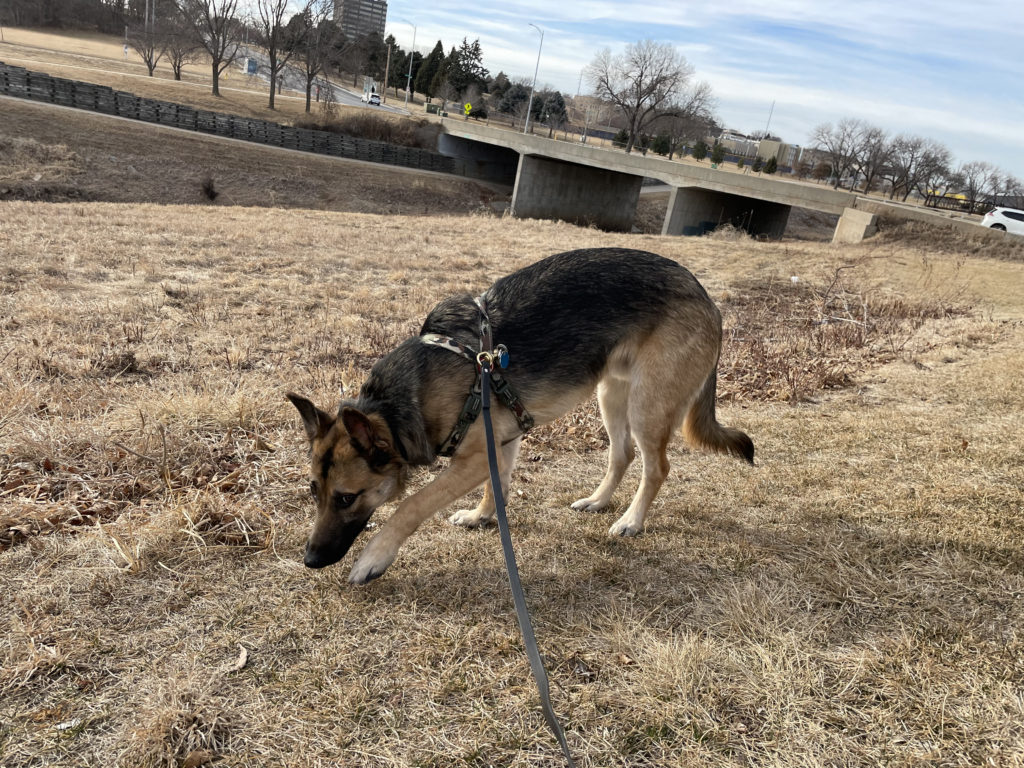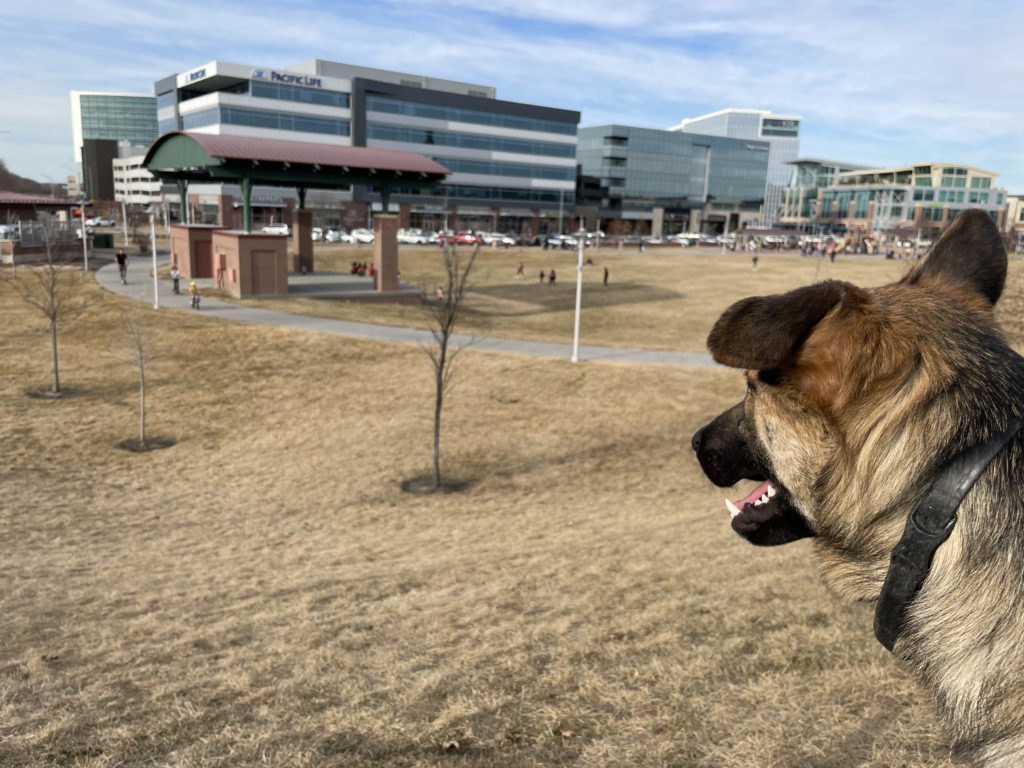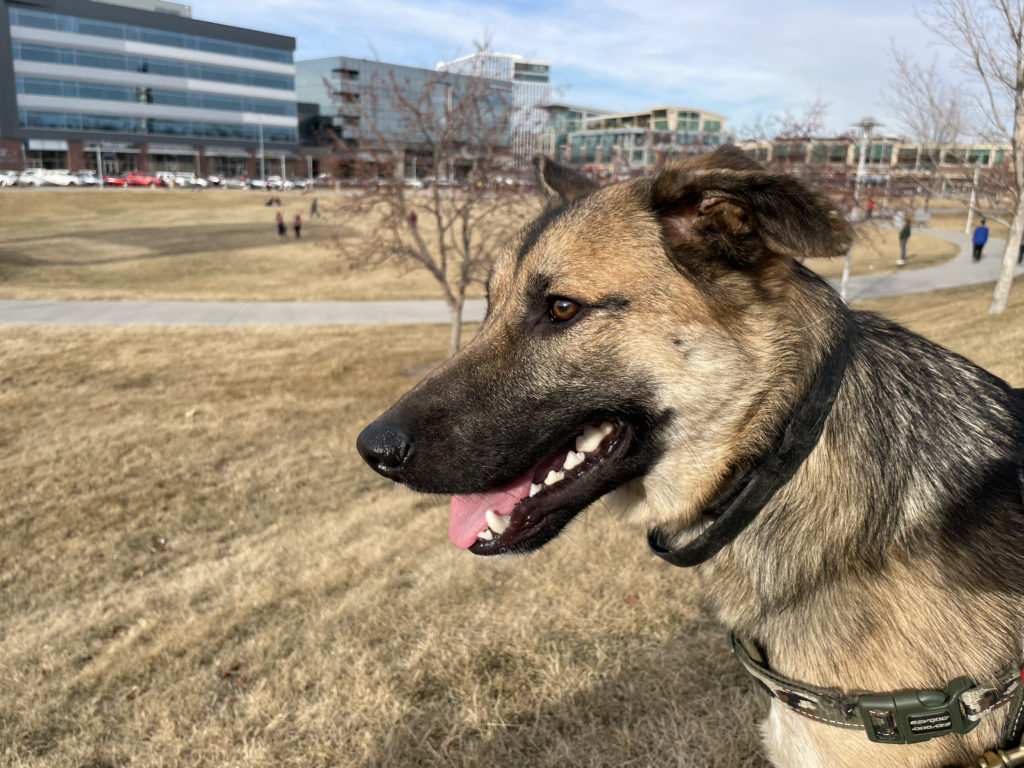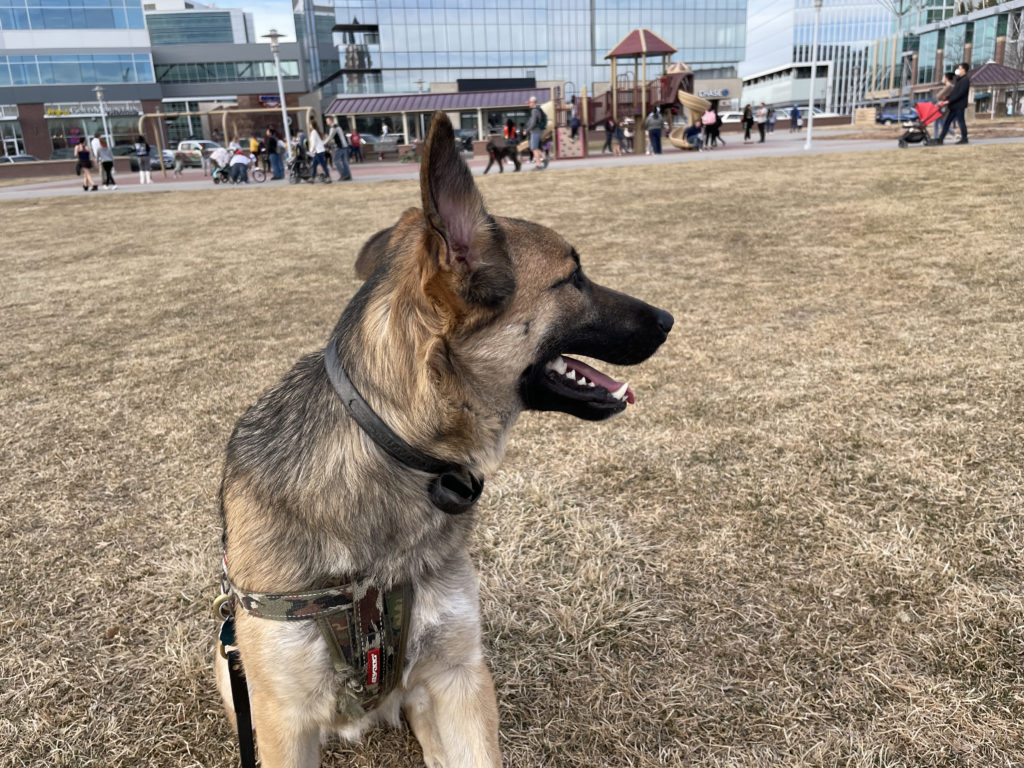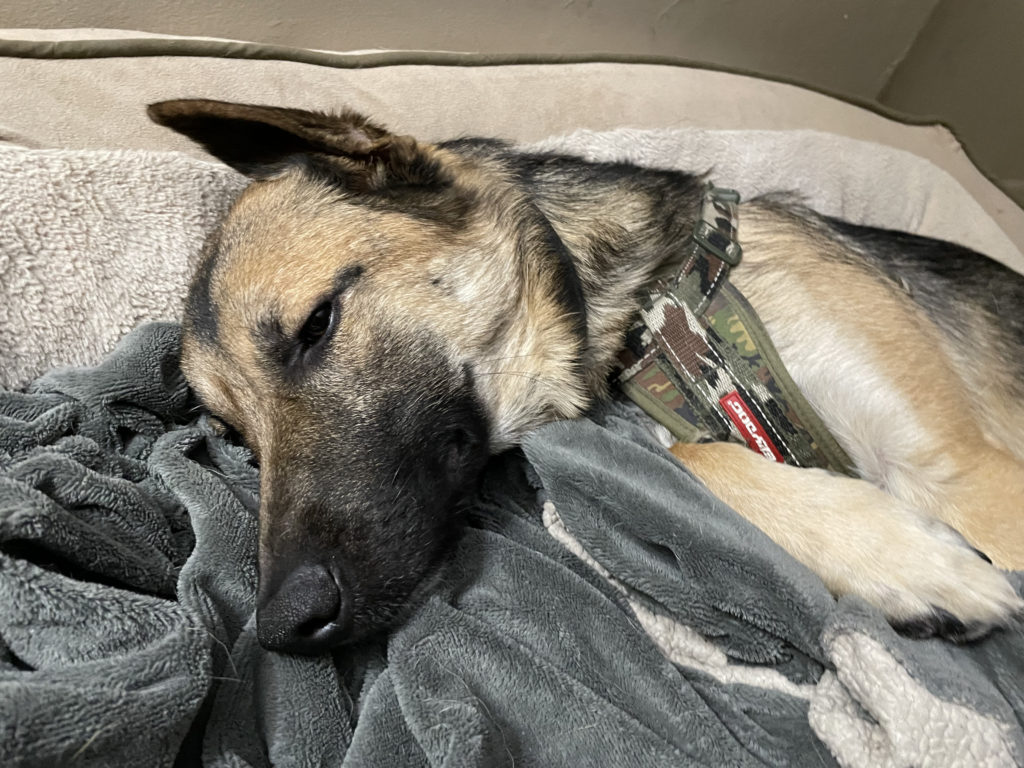Helping an Abused Rescue Dog Get Over His Fear of Strangers
By: David Codr
Published Date: February 23, 2022
For this Omaha dog training session, we helped 1 year-old German Shepherd mix Zeke dog get over a fear of strangers after being abused as a pup.
Zeke was surrendered to Dog Gone Problems in the summer of 2021. He had been enrolled in our puppy classes as a young pup. While he started out well, we noticed he started to act skittish and barked when new people approached him, especially tall men.
The dog being reactive to men is a result of his former guardian’s partner, a big tall man, spanking him then finally picking him up and threw him against the wall for getting into the trash. Abuse as a puppy can lead to many unwanted dog behavior issues, and is assuredly the reason he now barks at strangers who get too close.
Helping a Dog Get Over a Fear of Strangers
.
Anytime you are helping a dog get over a fear of strangers, you need to make sure the dog feels secure and comfortable when engaging in dog behavior modification. As a Dog Behavior Consultant, I find an effective ay to do that is to find a great location and situation to work in.
Many people make the mistake of trying to train or condition their dog “in the moment.” But we don’t learn to drive on a busy street, or play a sport in an actual game because its way too intense a place to learn a new skill. Dog behavior modification is the same way.
I selected an outdoor park with lots of space filled with grass and vegetation on the ground (good distracting sniffs) and not a ton of traffic. You may have to pick a specific time of day or day of the week when its less busy. The park is near my home and has a medium level of foot traffic and wide open spaces.
We started out on the far side of the park, away from the people with some overgrown shrubberies that must have had some interesting smells. Zeke dropped his nose to the ground and I kept the leash loose, following him around so he could sniff as much as he liked.
Sniffing can be comforting to dogs. Its also the source of new information which can buid confidence and also provided a nice distraction. We could head the voices of the kids playing nearby, but due to a bern, they were not visible. A perfect set up for my plan. We spent about 12 minutes walking back and forth wiht Zeke’s nose leading the way.
With Zeke satisfied on his sniffs, we headed over the bern looking for a spot that incuded enough distance where Zeke wasn’t targeting (starring at) nearby people because there was enough space (what I think of as escapability to the dog), but not so far away that he was indifferent to them.
I like to say a marker word when a dog does specific things like look at a person or dog without barking or lunging. But I also treat for simply being near these things without reacting. No marker word needed in those scenarios.
I usually oscillate between “find it” (tossing a treat on the ground), treating for no specific action (aside from not reacting) and asking for simple cue’s (sit, hand target etc). Helping a dog get over a fear of strangers involves a lot of distractions and rewards for desired behaviors.
If you are asking a dog to do things when working on fear based behavior issues, be sure to avoid any cues that require your dog to lay down and if it wont sit, assume that is because he doesn’t feel comfortable, not that he isn’t being obedient. If your dog wont sit, just go to a different cue. Its important to not force a fearful dog to sit if it doenst want to. This can cause them to feel trapped and make them more reactive.
We did so well Zeke took a seat on his own as we got to a new location. I took this as a great indicator he felt safe and secure; crucial elements needed to help a dog regain confidence around strangers. He didn’t bark or lunge at people as they passed by; things he used to do to all unknown people. Good puppy!
Anytime a person or dog walked by and Zeke looked at them or was aware but didn’t react, I gave him a treat. I like to think of a dog not reacting as similar to a cue like “roll over,” or “sit.” The more you reward your dog for not reacting when it can, the more comfortable and positive he will feel around that experience the next time. Povided you manage the environment so it feels comfortable
I paid close attention to Zeke’s body language, looking for stiffness, hard stares, avoidance (not looking at something) or other indicators he was starting to feel uncomfortable. When I spotted those, I helped him increase distance by doing some “find it’s;” tossing treats on the ground away from whatever was bothering him.
When he offered relaxed body language; open mouth, loose body, showing interst in his surroundings (sniffing, etc), we moved a bit closer to nearby people or dogs. Its a fluid process when you are trying to help a dog get over his fear of strangers. Lots of walking. Lots of treats and lots of pauses when he showed he could use a break.
Towards the end of the session, we got about 25 yards away from a bunch of kids on playground equipment. Seeing Zeke look at them and then away from them with an open mouth and relaxed posture told me we were making good progress. Fixing a fearful dog doesnt happen overnight. There are many small battles to take place.
Essentially I was arranging experiences where I could manage the environment so that nothing came close enough to Zeke to startle him or make him feel the need to lunge or bite. Since I made sure the situaiton was safe and non threatening, Zeke didnt have to do anything. This is one of the best ways to help fearfully reactive dogs.
If you do this right, your dog will look like its doing nothing except hanging out and sniffing. But don’t be confused, its usually a pretty intense experience for the dog. Many dogs will come home and sleep deeply after because of how draining it can be. For this reason, keep these sessions on the shorter side. Maybe 5-15 minutes max. When we got home, Zeke settled in on the dog bed and was asleep within minutes.
After your dog has become comfortable at a general distance, you can start gradually getting closer to people or dogs (at the dog’s speed). Also keep in mind your approach will need to vary. For some dogs or people, I needed to move farther away (like when a jogger came running by or a dog started barking) and for others I was able to get closer (people sitting or laying down or a dog who was smaller or laying down). Stopping a dog from barking or lunging at strangers is all about good situations. My job is to steer the ship and manage the situation so Zeke didn’t have to.
I made sure to keep in mind that its more important to have a successful session than a longer one. Don’t push longer than your dog can handle. Three fully successful (no reactivity) 5 minute sessions are much better than one, one hour session where your dog lunged a few times. You want to stack a successful (non lunging) session on top of another.
This was a great step in Zeke’s progress. He’s still a work in progress, but this positive experience around strangers at a distance will help him learn to relax around them. Its going to take several more in home dog behavior training sessions like this before he is ready for a new home, but he did so well it gave me hope there is light at the end of the tunnel.
Categorized in: Dog Behavior

